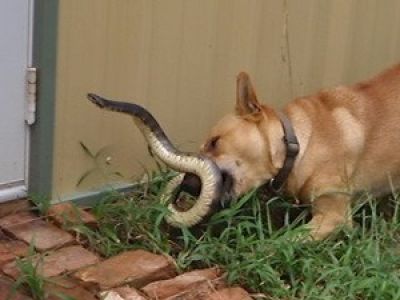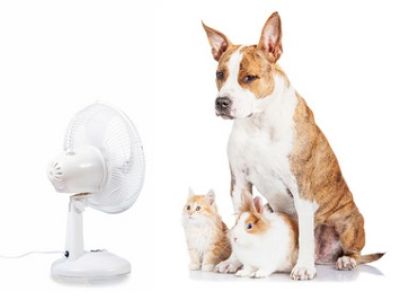Pet Emergencies

Bee Stings & Insect Bites
Any insect or spider bite can cause problems if they bite or sting your pet. A bite or sting can cause swelling, redness and itching. Some animals can have an allergic reaction to a sting or bite that may result in mild hives, facial swelling, vomiting, difficulty breathing or even collapse.
If the stinger can be found, scrape it out with a credit card or stiff material. Alternatively, use tweezers by grasping the stinger, which is located below the venom sac. Studies have shown that speed is of the essence in removing the stinger. If the only way is to pinch it and remove it, then do so. You’ll do more good than harm and you’ll get the stinger out faster. Don’t worry about squeezing more venom into the area – this has been disproven.
Apply cool compression to the area. Your pet should be examined immediately by a veterinarian if there is facial swelling, breathing difficulty or collapse.
DO NOT administer any medications without first contacting your veterinarian or emergency facility.
Electrocution
In order to avoid injury to yourself, it is imperative that you do not touch the pet until the electrical source has been turned off or moved. Electricity can flow through your pet and effect you as well.
Electrocution can cause severe tissue damage (like a thermal burn can) and can also lead to serious internal complications like fluid in the lungs. Immediate Veterinary care is needed but several things you can do at home can minimise the extent of the injury and promote healing.
WHAT TO DO – Unplug the electrical cord or shut off the electricity. If this is not possible, use a dry wooden broom or other non-conductive object to move the pet away from the source of the electricity.
Check for breathing and pulse. Begin CPR if necessary. If the pet is breathing, check the mouth for burns if this can be done safely. Apply cool compresses to burns. Cover the pet with a blanket to prevent heat loss.
Seek veterinary attention as soon as possible.
WHAT NOT TO DO – Do not fail to get the pet examined even though they may seem perfectly normal after being separated from the source of electricity.
Do not give any medications or liquids unless instructed to by a Veterinarian.
Any animal that has suffered electrocution should be taken to a Veterinarian, even if there are no apparent complications. Electrocution is a life-threatening emergency. It may cause abnormal electrical activity of the heart or a build up of fluid in the lungs that could be fatal hours after the shock. Most patients are observed for several hours or overnight to make sure the lungs are normal and chest X/Rays may be recommended.
Burns – First Aid
A burn is an injury of any tissue caused by heat, flame, chemicals or electricity. Burn classification determines the severity of the wound based on the depth of the tissue injury.
First degree burns are limited to redness and minor pain at the site of the injury. These burns only involve the top layer of skin and heal quickly.
Second degree burns have superficial blistering of the skin and can involve deeper layers of the skin.
Third degree burns occur when the top layer of skin is lost with damage to deeper layers. Burns exhibit charring and extreme damage. Third degree burns result in scarring and may require skin grafting.
WHAT TO DO – Extinguish all flames
Use appropriate measure to avoid being bitten (muzzle you pet)
For thermal or electrical burns immediately apply cool water compresses with a clean cloth to the site of the injury, changing them frequently as necessary to keep the site cool and wet. Continue this for at least 30 minutes. Transport your pet to a Veterinarian as soon as possible for further care. Burns can become worse before they get better and may require several weeks of therapy, multiple surgeries and possible skin grafting.
WHAT NOT TO DO – Do not apply ointments or butter
Do not attempt to remove burned hair or skin yourself
Do not delay seeking Veterinary attention.



